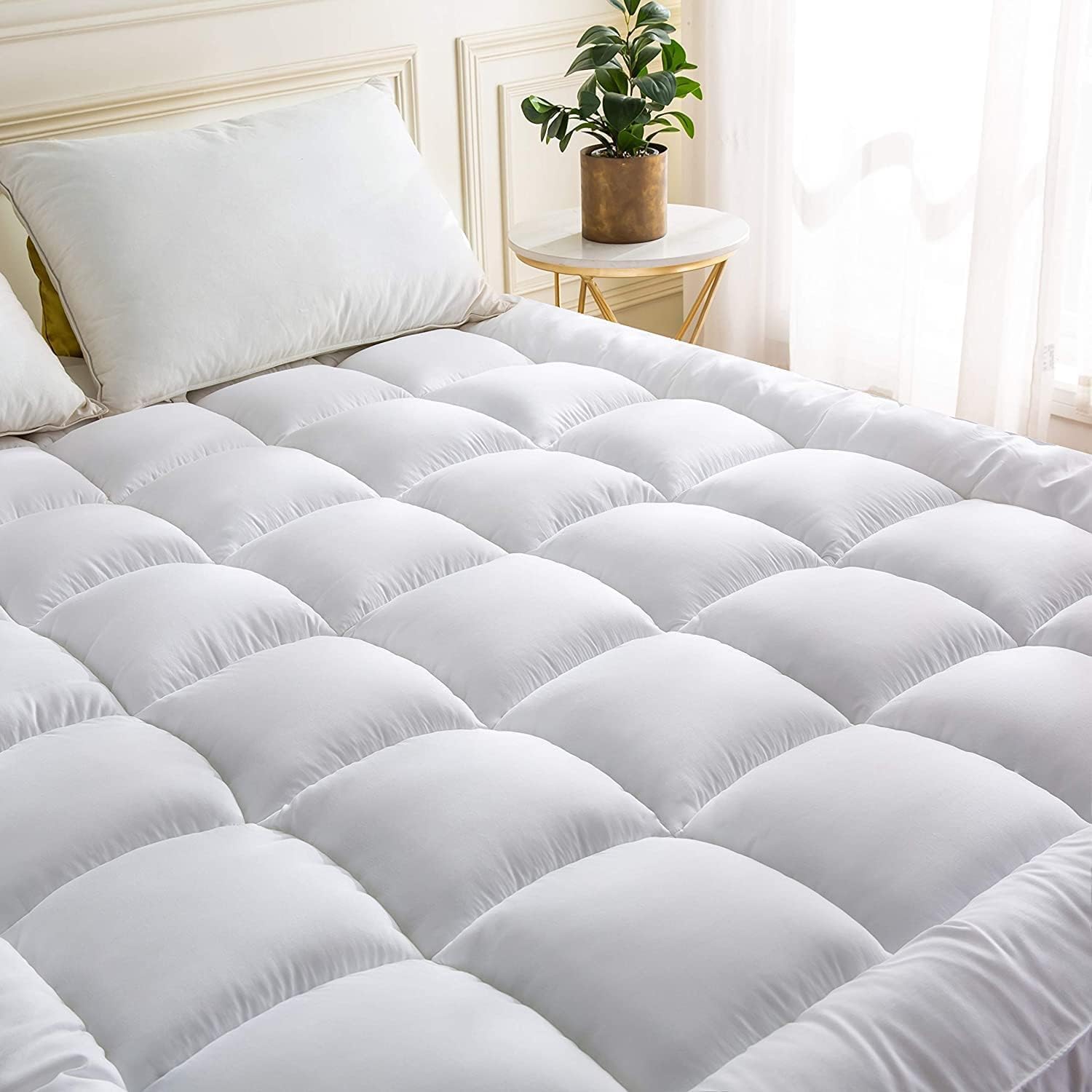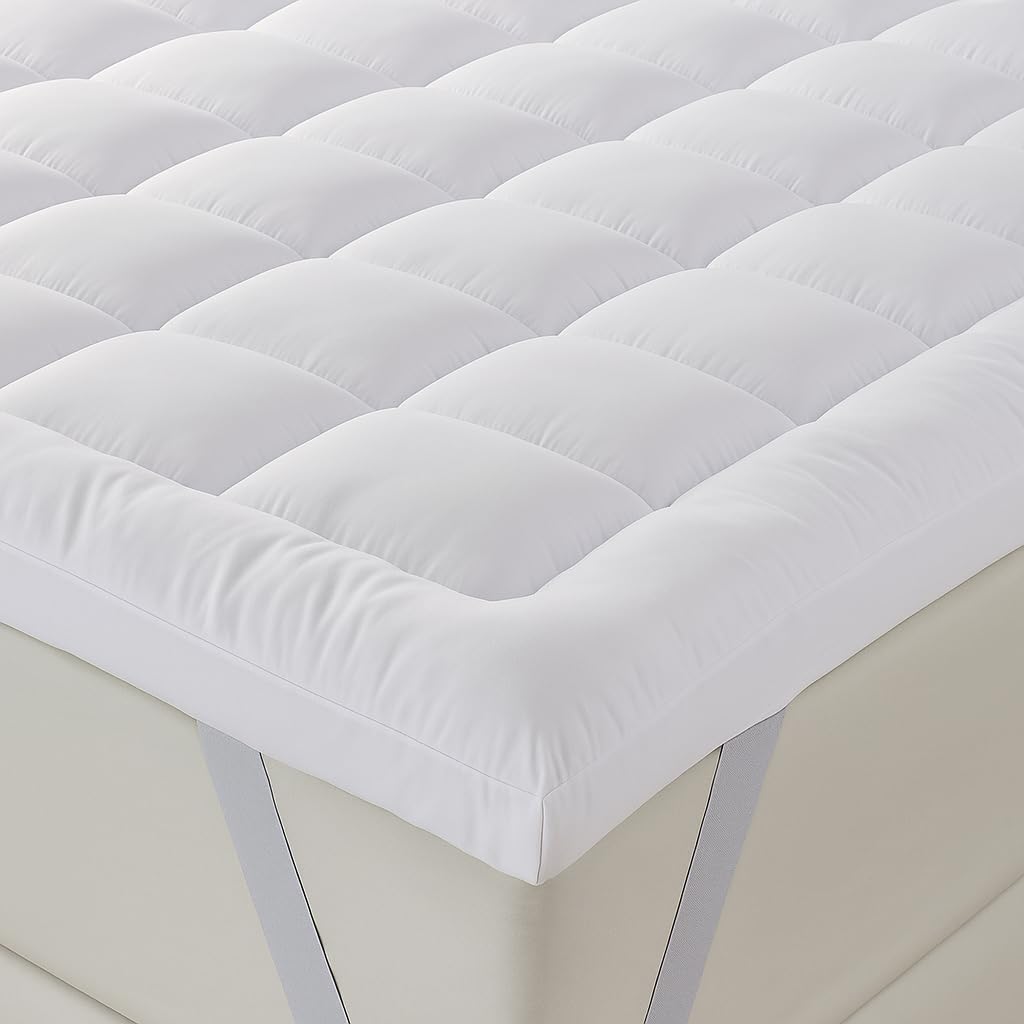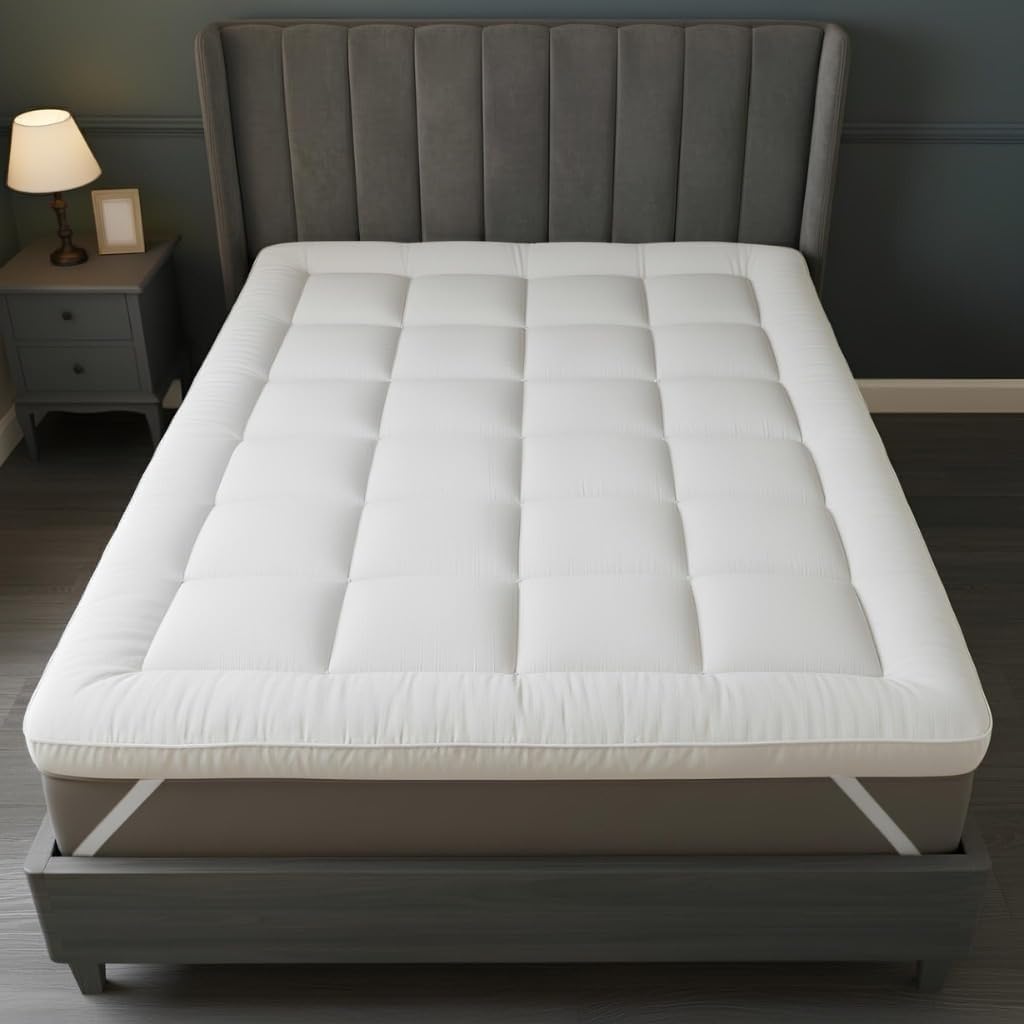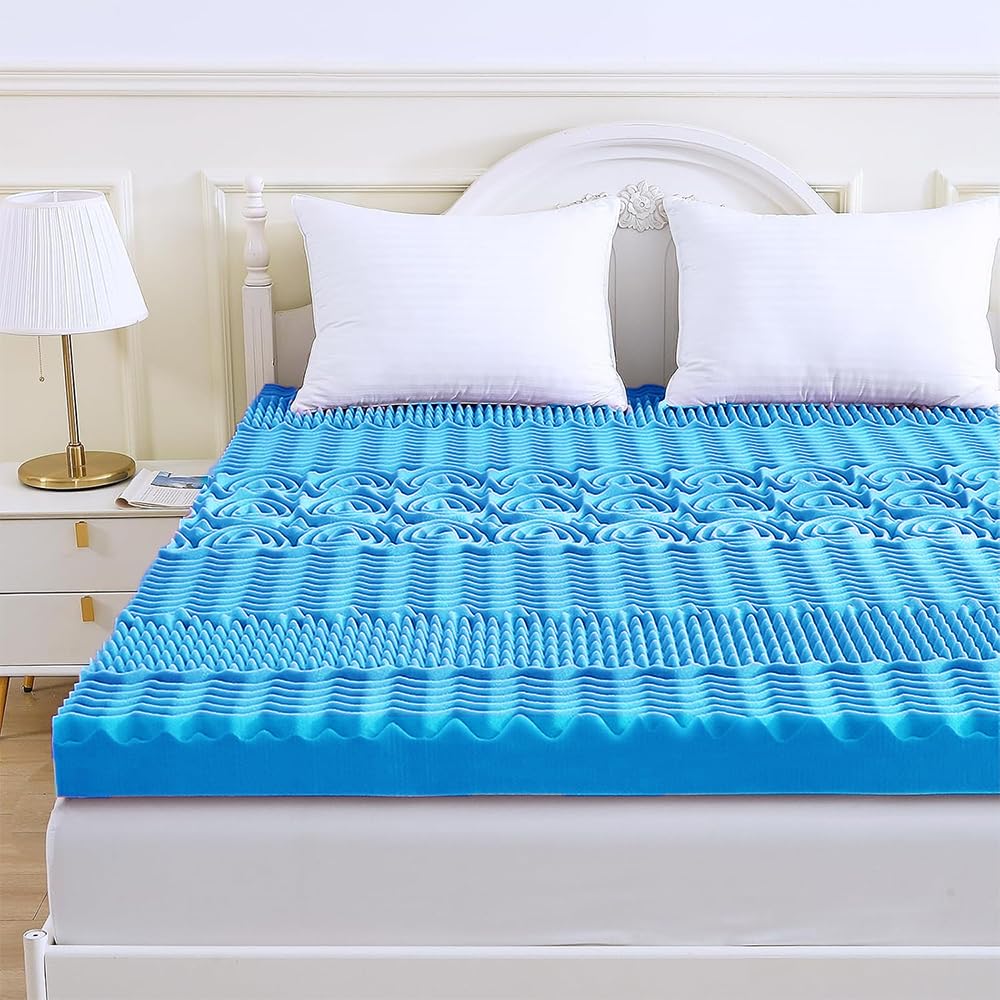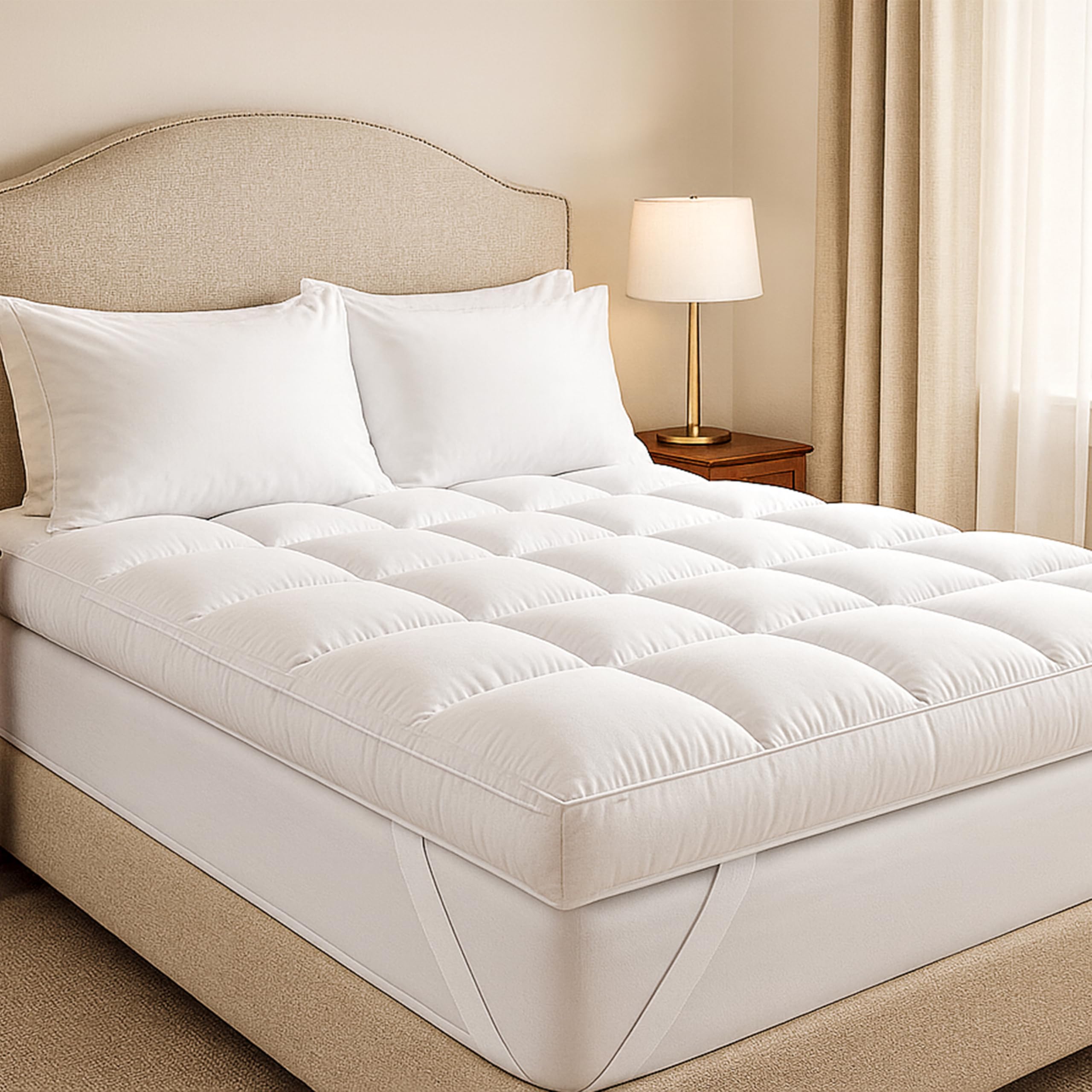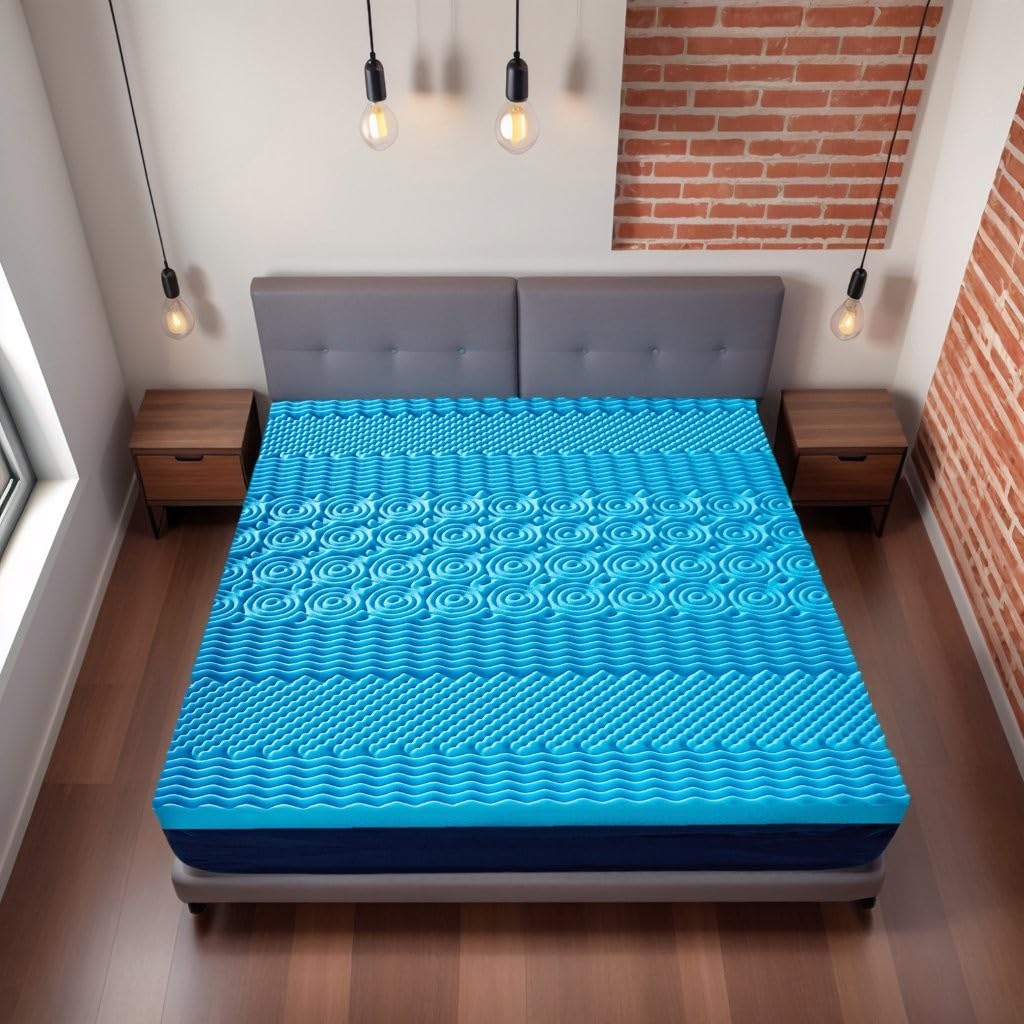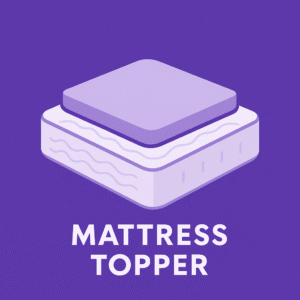The right mattress topper can ease morning back pain by improving surface comfort and alignment, but thickness alone does not guarantee relief. A thick, soft slab can feel great at first and then let your hips sink too far. A thin, dense layer can smooth a firm mattress without changing support. This UK guide explains how thickness, material, and your mattress firmness work together, and how to test options so you choose a topper that supports your back through the night.
Surface feel changes quickly with supportive, breathable toppers.
Why topper thickness matters
Thickness changes how much your body sinks before it meets pushback. A very thin topper mainly smooths the surface feel of a mattress. A mid thickness layer adds cushioning and can soften pressure points. A thick layer can change the overall feel of the bed. Back pain relief usually comes from balancing contouring at the shoulders and hips with enough pushback to keep the spine broadly straight. That balance is easier to find when you think about the topper and the mattress as a pair rather than picking one number in isolation.
Match thickness to mattress firmness and body weight
If your mattress is already soft, a very thick topper can make you feel stuck. For soft beds, consider a thinner topper with a denser material so you add a touch of pressure relief without losing support. If your mattress is firm and you feel pressure at your shoulders or hips, a mid to thick topper can help. Body weight matters too. Heavier bodies compress foam more. That means a thinner topper can feel thick in use. Lighter bodies may need a bit more thickness or a softer material to see a noticeable change.
Materials: memory foam, latex, fibre, and feather
Memory foam contours slowly and spreads weight over a broad area. It can ease pressure points, though it may feel warm and allow the pelvis to sink more if the base mattress is already soft. Latex feels buoyant. It springs back faster and holds you higher for the same thickness, which many people with back ache prefer. Fibre and feather feel plush, like a hotel topper, but they compress more during the night and need regular shaking. They add surface comfort rather than structural support, so they suit people who need a touch of softness more than a big change to alignment.
Heat, airflow, and cover fabrics
Back pain can be aggravated by restless nights in a hot bed. If you sleep warm, choose latex or ventilated foams and a breathable cover. Cotton or bamboo blend covers help wick moisture. Dense, closed foams may feel warmer. Balance comfort with airflow so you can stay asleep in one position longer without overheating, which often helps back muscles relax.
How to test your setup
Give any new topper at least a week. Your body adapts over a few nights. Test a thinner option first if you are unsure. You can stack feel by adding a breathable mattress protector and using crisp cotton sheets that glide. If your lower back aches, try a slightly thinner pillow so your head does not push the spine out of line, especially if the topper raises you higher on the bed.
When a topper will not help
If your mattress sags deeply or has a trench, a topper will follow the dip. In that case, a new mattress is the healthier fix. Likewise, if back pain stems from a very old pillow and poor neck support, sort your pillow first. Small changes at the neck can relieve back muscles that work overtime to compensate.
Care, returns, and trial tips
Check return policies and keep the topper clean with a washable cover while you decide. Rotate the topper head to toe every few weeks during the trial so it compresses evenly. Air the bed each morning by folding the duvet back for twenty minutes. These habits keep foams fresh and reduce odours that can occur with compressed products.
We group supportive, breathable picks that suit common back pain scenarios in our guide to mattress toppers that help sore backs. If you also wake with a stiff neck, see our guide to pillows that support your sleep position so your whole setup works together.
FAQs
What topper thickness is best for back pain?
There is no single best thickness. Many people find five to seven and a half centimetres works when paired with the right material. Match thickness to your mattress firmness and body weight. Test and adjust.
Is latex or memory foam better?
Latex holds you a little higher with more bounce and airflow. Memory foam contours more and can feel warmer. For back pain, latex often provides a better balance of support and comfort, but individual preference matters.
Will a topper fix a sagging mattress?
No. A topper follows the surface beneath. If your mattress sags, replace it. Use a topper to fine tune comfort once the base is supportive and even.
